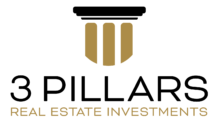A popular strategy for real estate investors is something called a “value-add” deal.
What this means is you buy an asset that has been underutilized, either because the previous management didn’t optimize the potential value that the property could’ve produced or they were just inefficient in their operations. This could mean they didn’t watch their expenses very closely, leading to cash falling through the cracks, causing the NOI to be hit significantly. On the other hand, maybe they just weren’t focused on raising rents to stay comparable with their competitors, out of fears of tenants vacating, leaving them with unrented units and a lower overall income. Regardless of how the asset was mismanaged, this allows a new owner the opportunity for a HUGE chance to increase the value through forced appreciation.
What exactly is forced appreciation?
Before we dive in, let’s understand the two main forces that determine the Value of an asset: Net Operating Income (NOI) and Market Capitalization Rate (Cap Rate)
NOI (Net Operating Income)
The NOI is daily simple to calculate. Take all Income from the building (Including rents, laundry income, storage, parking etc.) and subtract all the expenses associated with running the property.
Let’s assume we have a 50 unit apartment complex that produces $480,000 in rental income yearly, as well as $27,500 in Laundry Income.
Total Income: $507,500
For ease, let’s say expenses for the year are $230,000
This means our NOI is $277,500.
This means that our property earned us $277,500 for the year. Not bad!
Now we want to take a look at the market Capitalization rate
Capitalization Rate (Cap Rate)- %
The cap rate is a tool that allows us to compare one deal to another on a high-level within the same market. Every market has different cap rates, mainly because of the demand one has to buy there. The cap rate is much lower in amazingly hot real estate markets like Florida as compared to a tertiary market in the middle of nowhere. For example, if you look at a deal with a 7% cap rate, this means if you bought the deal all-cash, you could expect a 7% return. If you buy a deal at 4.5% cap rate in the same market, this means you are paying a premium for a property because you’d only receive a 4.5% return on your money.
Quick and easy rule to know:
Brand new assets with all the nicest amenities will likely sell for lower cap rates. (remember, low cap rates means you are paying a premium. Think of a luxury car: you’re going to pay more for the nicer, better car.)
However, I would advise you to do your due diligence if you saw a deal selling for a 23% cap rate. Any good deal will not be selling for so cheap. You’d like to be buying a deal with so many problems, it will require so much of your time, you’re going to regret the purchase. Just my two cents.
Finding a solid deal at a decent cap rate, with room to improve the asset will allow for immediate returns from day one, while giving you that “value-add” we want in order to raise the value of the asset.
Now back to the NOI of $277,500.
Let’s say this 50-unit is in New York City, where the market cap rate is 5%, you take the NOI and divide it by the Market Cap Rate
NOI ➗ Cap Rate = Market Value of Asset
$277,500 ➗ .05 (AKA 5%) = $5,550,000
What this means is that in New York City, if you have a deal that earns $277,500 of income yearly, you can expect to earn $5.55MM if you decide to sell the asset.
Now what happens if you have a chance to buy this deal, and you see a chance to increase rents 15%, while cutting expenses 25% by billing back tenants for utilities, something the previous owner did not do.
Original Rental Income of $480,000
Increased by 20% is new rental income is $576,000
We assume Laundry income stays the same. $27,500.
New Income: $603,500
Now we take the expenses of $230,000 and we decrease by 25% through billing back tenants.
$230,000 x 75% = $172,500
New Expenses: $172,500
Value-Add NOI: $431,000
Even if we assume that cap rates in New York have increased (meaning people aren’t paying as large a premium for deals as they previously did), the market cap rate is still 6%
If we take the new NOI of $431,000 and divide it by the new market cap rate of 6%
$431,000 ➗ .06 (AKA 6%) = $7,183,000
By using the value-add strategy, we forced appreciation on this 50 unit building and built an additional $1,633,333 of equity (New value – old value), which can be refinanced to pull out that money for a new deal! The best part of the cash-out refinance is that the money you pull out is 100% tax-free. (Please consult with your CPA)
If you have more questions, please feel free to reach out to me!
Jason@3pillarsrei.com
